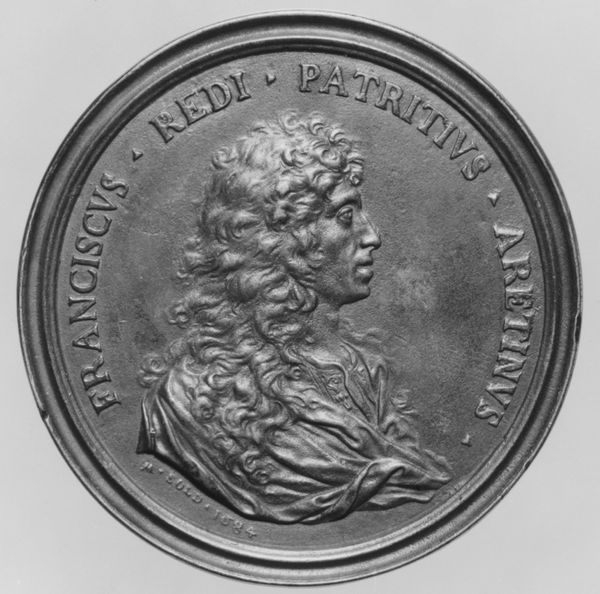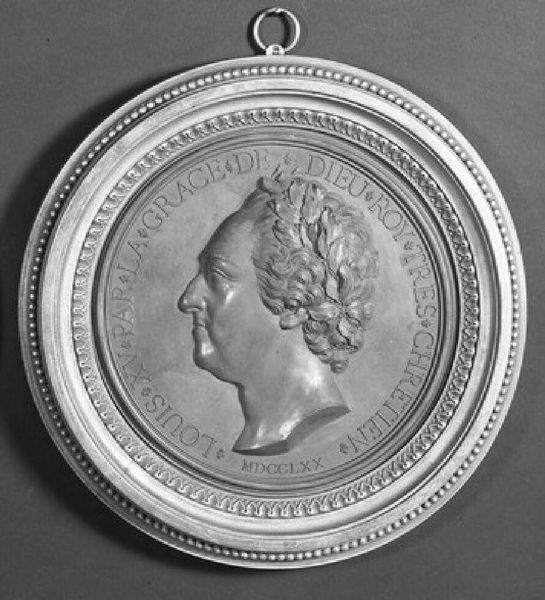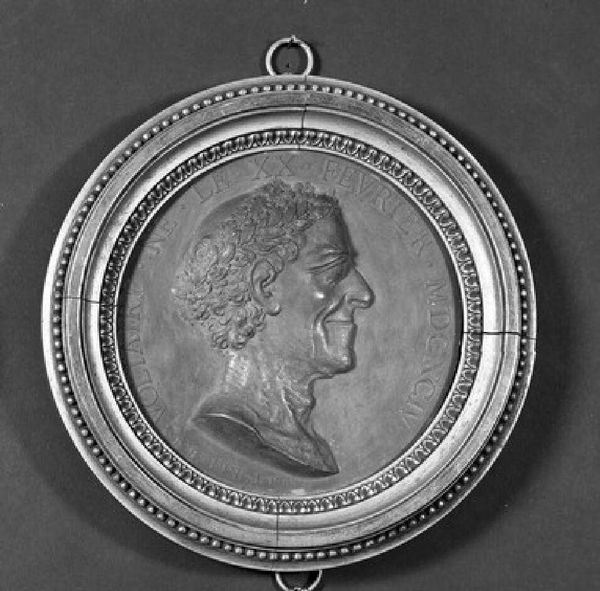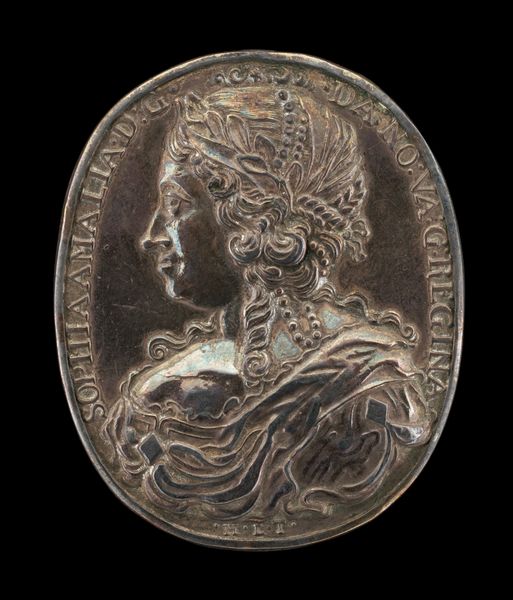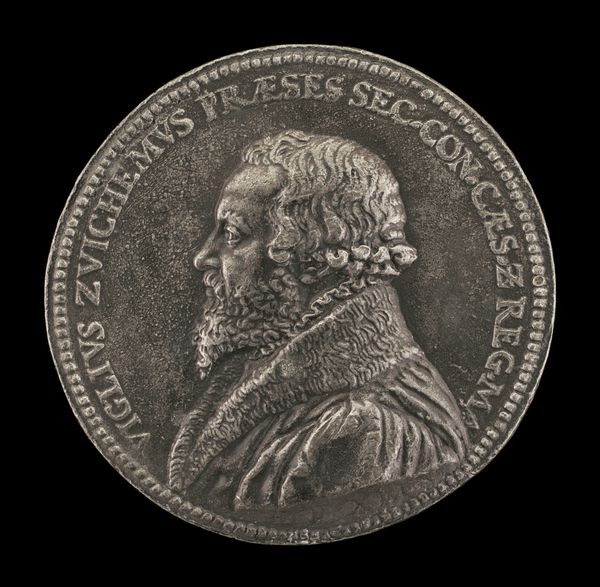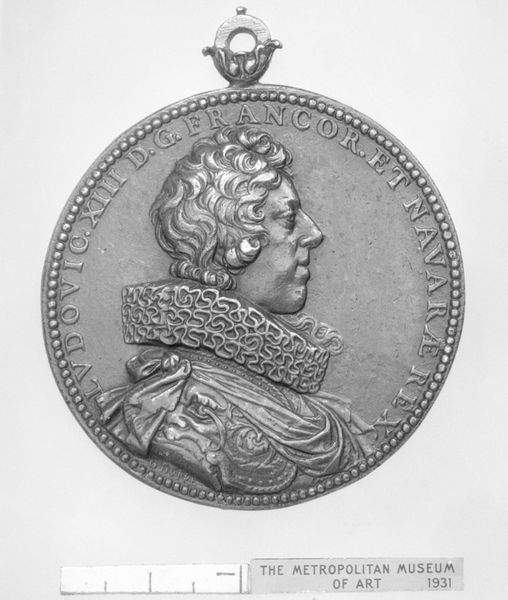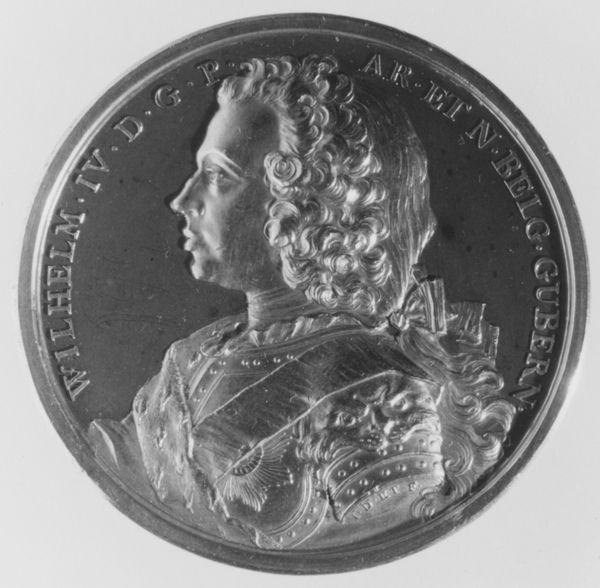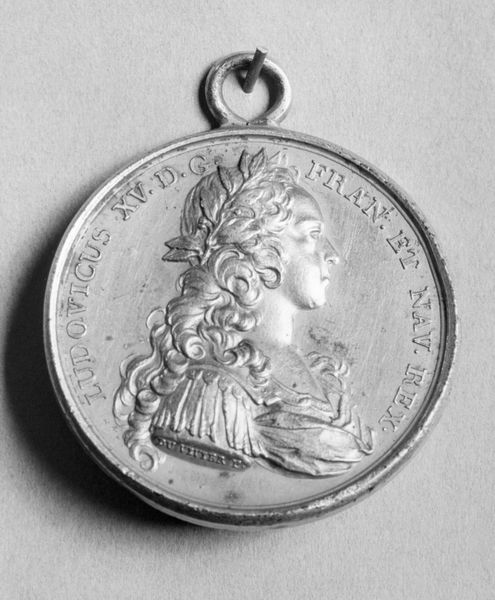
Michel Le Tellier (1603–85), Chancellor of France 1672 - 1690
0:00
0:00
metal, sculpture
#
portrait
#
medal
#
baroque
#
metal
#
sculpture
#
sculpture
#
men
#
decorative-art
#
profile
Dimensions: Diameter: 2 1/2 in. (6.4 cm)
Copyright: Public Domain
Curator: This medal, dating from between 1672 and 1690, offers us a profile of Michel Le Tellier, the Chancellor of France, created by Nicolas de la Haye. Editor: It’s striking, isn't it? The rigid profile set against the soft curls of his hair gives a sense of formality and hidden depths at the same time. The texture, even in metal, creates a very human effect. Curator: Precisely. Profile portraits like this were particularly favored for their capacity to convey both authority and individuality. They reference the visual language of ancient coinage, linking Le Tellier to a lineage of powerful figures throughout history. It suggests enduring legacy. Editor: It's a visual shorthand, immediately associating him with that long history of power. The inscription encircling his image acts almost like a halo. What else can you tell me about how imagery plays into this work? Curator: Well, the medal itself as an object serves a symbolic function, of course. Often these types of objects are distributed to associates or given as diplomatic gifts, thereby propagating a specific image of Le Tellier and his chancellorship. Every copy reinforces the political idea. Editor: So, it is both a representation and an active participant in crafting a particular socio-political narrative, almost propaganda by portraiture. I find it intriguing how the artist balances the detailed rendering of Le Tellier's face and clothing with the simplified background. There’s almost a flattening effect, as if to prioritize the image over any distracting contextual elements. Curator: That distillation, that very focus on the essential likeness and inscription, contributes to its effectiveness as a symbol. It emphasizes the person and the office above all else, thereby solidifying the power dynamics of the era. Editor: Looking at it now, I see how this small object carries significant weight. More than just an artistic likeness, it served as a potent instrument for reinforcing authority and influencing perceptions of power. Curator: Yes, indeed. It makes you ponder how such seemingly straightforward depictions can be so deeply embedded in the socio-political machinery of their time.
Comments
No comments
Be the first to comment and join the conversation on the ultimate creative platform.
